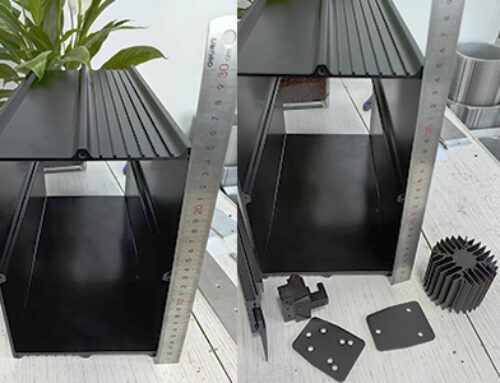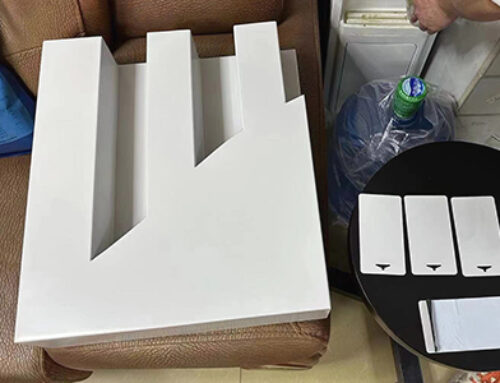Project Description
The 6××× series aluminium alloy extruded profile is widely used in construction, transportation, electronics and other industries due to its good corrosion resistance and comprehensive strength. Among them, 6063 alloy extruded profiles belong to Al-Mg-Si system. It is not sensitive to stress corrosion of aluminium alloy, with moderate strength, excellent compression performance, good corrosion resistance, weldability and good processability, become the most widely used building material materials.
Chemical Composition Analysis of 6063 Alloy Extruded Profiles
For the chemical composition of alloy 6063, we have two previous articles devoted to this discussion:
Chemical Composition is the Determinant of Aluminium Profile Performances
Optimal Control of Aluminium Alloy 6063 Chemical Composition
In fact, the core points have the following three aspects:
1. Selection of Mg2Si quantity.
6063 aluminium alloy heat treatment strengthening effect is increased with the increase of Mg2Si quantity increases, when the amount of Mg2Si within the scope of 0.71% to 1.03%, the tensile strength with the increase of the amount of Mg2Si approximate linear increase, the deformation resistance but also follow, processing difficult. When the Mg2Si quantity is less than 0.72%, the tensile strength value of products with small compression coefficient is not up to the standard. When the Mg2Si volume was 0.9%, the plasticity of the alloy decreased. Thus, according to Al-Mg-Si alloy mechanical performance curve, on the premise of meet the mechanical properties of the alloy, but also to smoothly of the extrusion and oxidation coloring, T5 state the amount of 6063 alloy Mg2Si control at about 0.80%, and the amount of T6 state alloy Mg2Si control at around 0.95%.
2. Selecting of Mg, Si Contents
In alloy 6063, All Mg element almost form Mg2Si, So once the amount of Mg2Si is determined, the Mg content can be calculated according to the following formula: Mg%=(1.73×Mg2Si)/2.73.
Therefore, combined with previous Mg2Si content analysis, according to many years practice, alloy 6063, the state of the T5, Mg content about 0.5%, and the Mg content of T6 state at about 0.6%, the state of 6063 alloy T5 Mg content range of 0.46% – 0.46%, T6 state of Mg content range of 0.57% to 0.57%.
3. Control of Impurity Content
In alloy 6063, the compounds formed by Fe have a strong thermal shrinkage, which makes the ingots crack. In particular, when Fe < Si, it is easy to form a low melting point in the grain boundary of the ternary eutectic, the thermal brittleness is large; When Fe > Si, it produces a high melting peritectic reaction, which improves the temperature limit in the brittle region, and can significantly reduce the thermal cracking tendency.
Therefore, when the amount of excess Si is 0.09% to 0.13%, the content of Fe should be above 0.15%, and too low will be large. Impurities of Fe content also must carry on the control, because of Fe and Al strip or rod grain formation, from several microns to several microns, the electrode current is different from aluminium, affect the oxidation film gloss and transparency; Fe also reduces the plasticity and corrosion resistance of the alloy. If the Fe content is too high, the extrusion pressure rises and the surface quality deteriorates. Therefore, for the silver-white profile, the Fe content can be relaxed, controlled by 0.35%, and the colour profile must be controlled below 0.25%. Taken together, the Fe content is suitable for 0.15%-0.20.
6063 aluminium alloy casting bar, if the Zn and Ga contents are higher, such as zinc more than 0.02%, Ga is more than 0.03% when extrusion profiles are neutralized before oxidation pretreatment, the snowflake spots will appear under the effect of Cl- and SO42-. Therefore, the contents of Zn and Ga should also be strictly controlled.
Homogenizing Treatment
In Alloy 6063, the dissolving temperature of Mg2Si is 520 ℃, and Al-Mg-Si three-phase eutectic temperature is 595 ℃, the actual burning temperature is lower than 595 ℃, so homogenization should be treated between 520-520 ℃.
After homogenization, the following changes occurred in Alloy 6063 structure:
- Coring Segregation disappeared.
- Mg2Si is dissolved in α (Al12Fe3Si2), and unbalance eutectic disappeared.
- The acicular β(Al9Fe2Si2) is transformed into a spherical α (Al12Fe3Si2), and the iron-containing phase particles are refined.
Through the above changes, the extrusion performance and aluminium profile quality will be greatly improved:
The disappearance of coring segregation will reduce the inhomogeneity of metal flow during extrusion and improve the surface finish of extruded profiles;
The decrease and refining of large unbalance phase Mg, Si particles and Al-Fe-Si phase particle in the structure, will reduce the surface crack tendency and increase the extrusion speed;
The solid solution of Mg2Si is the first condition of strengthening the alloy and improving its mechanical properties.
In general, β phase to α phase transition temperature is 580 ℃, but actual trace manganese in alloy added will decrease the temperature of transition, and shorten the transition time. According to the actual situation, reasonable homogenization process of alloy 6063 is 560 ℃ / 6 h.
It should come fast cooling after alloy 6063 homogenization treatment, the precipitation of Mg2Si phase is small and evenly distributed, so as to make the Mg2Si phase in the subsequent heavy dissolve easily in the extrusion process, the solid solubility increases, improve the effect of heat treatment, improve the strength of the alloy. Cooling target should be between 270-320 ℃ metastable precipitation cylinder, the six-party beta Mg2Si phase structure, the nucleation temperature is low, diffusion growth speed slow, small size. According to the experience, the cooling way is best to first powerful air cooled to 250 ℃, 350-500 ℃ / h speed, after 0.5 h, water cooled to 50 ℃.
Extruding
Alloy 6063 has good performance in extrusion, usually, the extrusion speed of solid profile is 15-50 m/min, and the hollow profile is 10-30 m/min. The extrusion speed is closely related to the adopted process and the alloy composition.
For 6063 alloy, the rapid preheating of pre-extrusion ingot blank does not change the structure of homogenizing billet. Mg2Si precipitation phase continues to exist and presents a low deformation resistance. When slowly heating in a gas stove or fuel, the Mg2Si phase will be highly dissolved, resulting in high deformation resistance and reduced production capacity. If preheating conditions before extrusion are not optimal, the advantages of air cooling will also be lost. Therefore, it is only by taking into account the uniform cooling condition and pre-extrusion preheating method that the working conditions and production capacity of the extruded equipment can be optimized.
In the extrusion process: The usual solution temperature and quenching sensitivity of 6063 alloy increased with the increase of Mg2Si content. For most aluminum processing enterprises, the content of the alloy element, in order to make Mg2Si fully soluble in aluminum, the outlet temperature of the extruded section should be ≥500℃, but be ≤ 560℃, otherwise the surface quality of the profile will decrease; If the outlet temperature of the profile is < 470℃, it cannot obtain the organization in the solid solution state, and the profile mechanical properties of the post-aging are not enough.
After the profile release from the die, water mist cooling or forced air quenching can be used. The faster the cooling speed, the higher the intensity. The cooling rate is too low, the strength will be low. Considering that water cooling can produce a large deformation, the profile’s wall thickness less than 1.6mm can use strong air cooling to replace water cooling.
For the aluminum processing enterprises that 6063 alloy billets were not treated surface, in order to make the surface impurities of the cast rod not into the profile, the temperature of the container should be slightly below the bar temperature 30-50 ℃, while general extrusion process usually causes 50-80 ℃ temperature rise; Taken together, the reasonable “three temperatures” should be: ingot: 430-480 ℃, mold temperature: 450-470 ℃, container temperature: 400-450 ℃.
Artificial Ageing
From a well-known, Al-Mg-Si alloy has parking effect, parking time between extrusion hardening – ageing on mechanical properties of alloy has a significant impact, park after 24 hours, the change of the mechanical properties of the alloy has around 30 Mpa, adopted by the combined with component analysis before T5 or T6 state of Mg, Si content, for T5 state alloy, its parking time can be appropriately extended, and for T6 alloy, the shorter parking time, the better. According to the factory’s experience and production practice, the parking time of 6063-T6 alloy less than 4 hours is better.
Usually, the ageing properties of aluminium alloy are: The longtime limitation of low temperature has higher strength than that of high-temperature short time. For 6063 T5 alloy, 8 hours ageing under 175 ℃, mechanical properties of alloy can obtain the biggest play, however, as an enterprise, the cost is also a necessary factor, with 200 ℃ / (2-3) h of aging process also can satisfy completely the requirements of mechanical properties, and saving time. After many years of practice, Our factory adopts the best ageing process of alloy 6063 T6 states of 180 ℃ / 6 h.



